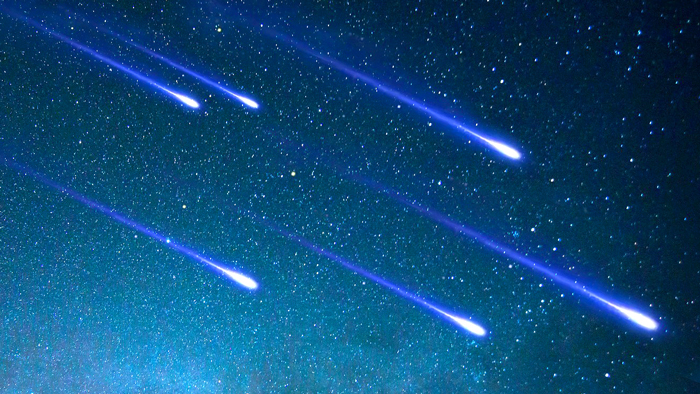Astronomers have been disinterested in the study of meteors for centuries, likening them to an atmospheric phenomenon similar to lightning. It was only at the end of the 18th century that their speed and height were calculated by triangulation, observing them simultaneously from several stations a few kilometers apart.
It wasn’t until 1893 that Estonian astronomer Ernst Öpik first described the process by which meteors burn up in the atmosphere.
The frequency of meteors and their distribution in the sky is not regular. Thus we observe meteor swarms which, during a certain time interval (a few days) appear in roughly the same region of the sky.
Many showers or “showers of shooting stars” are periodic, the best known to the public is certainly the one that happens between July 25 and August 18, the swarm of the Perseids, which gives the opportunity to French television to ‘organize his famous public astronomy program, “Night of the Perseids” in mid-August.
Some years, we can count more than 170 Perseids per hour at the zenith (ZHR, see below). Peak Perseid activity usually occurs on August 12 around 3 p.m. UT. In Europe, you have to wait at least until 11 p.m. local time to avoid the twilight lights with the inconvenience that their number will have already halved.
During a swarm period, experience shows that if you look at the sky about 45 ° above the horizon and within a radius of 45 to 90 ° around the radiant (the point in the sky from which it seems to be coming from meteors), if you wait a few minutes, you have every chance of seeing a few meteors and why not even a meteor.
Although the table of different swarms lists many appearances, it is not always easy to spot them for reasons which are meteorological, geographical and physical. The total number of meteors appearing on average in the space of an hour is taken at the zenith, it is the famous ZHR or “Zenith Hour Rate”.
This number is calculated vertically to the observer and influences the results: thus at 60 ° above the horizon only three-quarters remain, half at 27 ° elevation, while the number of meteors visible at 2.6 ° above the horizon is only 10%.
We must also find a compromise with the rise of meteors on the horizon. Knowing that they undergo the first effects of atmospheric friction at the level of the ozone layer, at an altitude of more than 100 km, the probability of observing them at horizon level remains in theory high. The only downside, our horizon can be blocked by nature, foggy or made bright due to urban lighting, but the crucial point is the fact that the luminous trail produced by the meteor will be less bright the more it is away from the observer. Its magnitude quickly falls within the limits of our visual sensitivity and its trace is lost in the sky.
The activity of the swarms varies greatly from year to year and even professionals find it difficult to predict the exact date of the maximums and the hourly rate with precision. The last great rains date respectively from 1961 (Perseids), 1966 and 1999 (Leonids) to which are added some beautiful very bright meteors and even cars as seen below.


wow
omaygot
wow
amazing
knknk
nice
123
sdaa
ttfft
ds